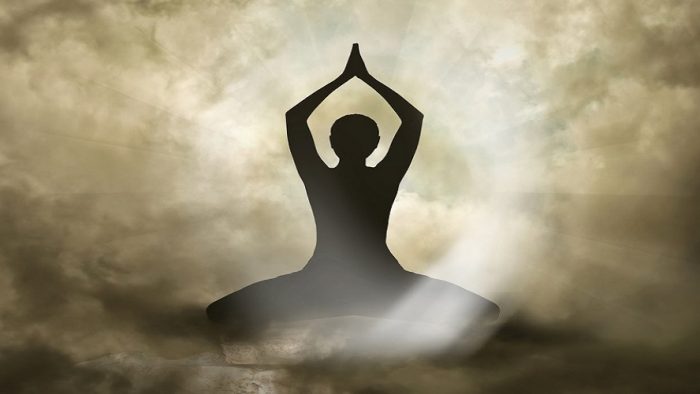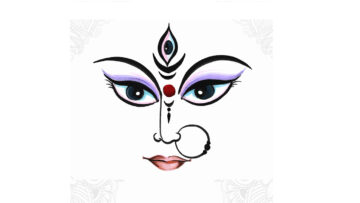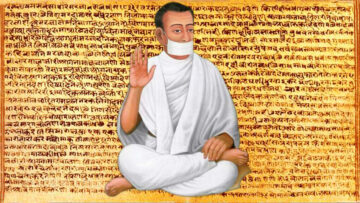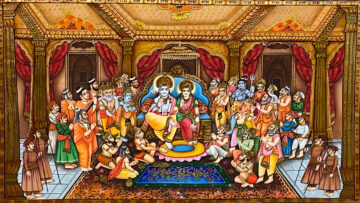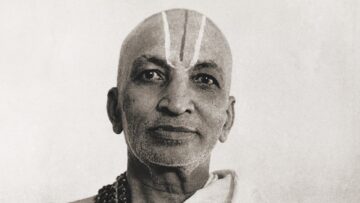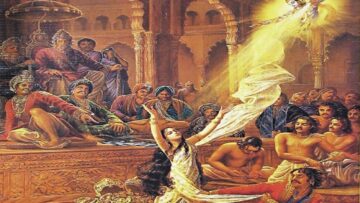We are all aware about Yogacharya T.Krishnamacharya being a pioneer in using yoga (specifically asana and pranayama) for therapy and well-being. But little did we know that he was a great scholar of our sacred knowledge and traditions. One of his long-standing students Raghu Ananthanarayanan has put together an interesting note about how can one use yoga as a tool for deeper fulfillment and meaning in life? He has used the device of an innocent conversation between a young, curious child, Chiku who is Gayatri Iyer, and an elderly teacher Rita, just like the dialogues that used to take place between student and teachers at ashrams. In my discussions with Raghu who is Rita in the writings, I learnt how symbols and rituals of our Hindu culture have been misinterpreted for long and once you know the real meaning, you can only marvel at the profundity of the entire meaning and how it is part of the larger divine order.
Chiku: Rita, you keep saying that learning is everything. What do you mean by it?
Rita: There are so many beautiful and extraordinary things in the world Chiku, one life time is not enough to learn about them.
Chiku: How does one learn?
Rita: Well, there are four parts to learning. The first part is the learning that comes from a wise teacher.
Chiku: What is that?
Rita: A wise and a good teacher teaches you the basics of the subject he is a master of and helps you to learn how to learn.
Chiku: What does that mean?
Rita: Only one fourth of learning comes from a teacher, the next one fourth comes from your own dedicated practice. This practice cannot be a dumb practice, but a practice that teaches you more and more about the subject.
Chiku: Ok, but that is still only half.
Rita: The next one fourth comes when you teach.
Chiku: How is that? If I teach isn’t that for the other person to learn.
Rita: A wise teacher takes responsibility for the persons learning, so she will challenge herself to be clearer in her own understanding. Also, a wise teacher will become even more dedicated in his/her own practice and therefore enquire deeply into the subject matter before teaching.
Chiku: But how do I know I am ready? I can’t have acquired all the knowledge about the subject?
Rita: No one is ever ready and complete! In my own case my teacher said to me, it is time you start teaching if you want to keep learning. And I realized how serious I must become in my own learning process if I take up the responsibility.
Chiku: Then what does yoga have to say about learning and teaching?
Rita: What I am sharing with you is what my teacher told me about the process of really taking up yoga sAdhanA. In any case, the scriptural statement says listening with great clarity to what is said, shravaNam is the starting point. Then one ponders over the learning, observes the world and discovers the actuality of the inner meaning of the teaching. This is called mananam. Then one has to live by the truth one has discovered. This is nidhidhyAsitavyam. Teaching others makes the process of mananam much deeper, the problems one faces while teaching another creates a very positive tension to learn more and learn deeper.
Chiku: I understand, I tried to teach my brother how to play lego with me I had to think hard about how I play before I could teach him to play with me.
Rita: And you would have had to let him make mistakes, and give him space to learn from that.
Chiku: Yes, if I tried to teach him too much before he made mistakes, or ask a question, he did not learn.
Rita: And every question he asked would have forced you to learn.
Chiku: That’s right.
Rita: Also, this idea applies to all learning, both inner and outer.
Chiku: So what about the last quarter of the learning?
Rita: That’s the ripening of the knowledge with age. (Rita smiling)
Chiku: That’s not fair, then it is going to take me a long time to really learn anything.
Rita: Yes, and it takes time to grow.
Chiku: But what is the role of a teacher in learning? Who is a wise teacher Rita?
Rita: That’s an interesting question. Let me see. Firstly, a wise teacher practices and lives by what he professes.
Chiku: I understand, my chemistry teacher is always excited when he teaches us, he even makes us feel how a solution will mix and boil! Whenever we ask him a question, he is genuinely interested. Not like my physics teacher who only goes by the book.
Rita: That’s right ChiKu, this is even more important when it comes to inner learning. A teacher who is not an example of what he professes is a charlatan.
A wise teacher who is like this is called an Apta vachana- one whose life reflects his teaching.
Chiku: Was you teacher an apta vachana? How was the inner learning experience for you?
Rita: Yes, he certainly was Chiku! He was so adept at his asana and prANAyAma practice that he has demonstrated a whole sequence when he was in his nineties. His ability to sense people and understand their deepest thoughts was extraordinary.
Chiku: Then what about reading?
Rita: You need to be very careful who you read. Many books are written by people who are not adept practitioners; especially in subjects like Yoga. My teacher warned us that many books written about our shastra-s are written not by adepts in the practice, but by people who know the language. Or worse still, by foreigners who use a translator to study the Sanskrit originals!
Chiku: That’s like a literature student writing about engineering.
Rita: Exactly. Only a realized person can know many of the nuances of an inner experience, as well as the technical specifics of a shastra.
Chiku: I know, that’s the difference between a comment by Harsha Bhogle or one by Gavaskar or Shastri!
Rita: Yes, a parallel would be the writings of Shri Aurobindo on the Bhagavad Gita compared to the writings of a pundit. My teacher called this jada vedAntam– dead knowledge compared to rasa vedAntam– rich and juicy learning.
Chiku:Why is it important to learn from a good teacher?
Rita: Do you use the word ‘vibes’?
Chiku: Yes, of course.
Rita: What do you mean by it?
Chiku: When I meet a person and hear them talk and see the way they act, I get some inner feeling, vibes!
Rita: Yes, what yoga says is that there is a transfer of prANA that happens all the time in any meeting or transaction between people. So when an authentic teacher offers his/her knowledge they do so with sincerity and a transfer of energy takes place.
Chiku: Will the teacher then not get depleted.
Rita: Yes they will, that’s why in yoga, it is recommended that a teacher works four times as hard as the student to replenish him/herself!
Chiku: You are also a yoga teacher. So, is it not difficult to be a teacher than a student? There are so many challenges, I don’t think I can ever teach.
Rita: I don’t think there is any difficulty at all. I just love yoga and every opportunity for me to delve deeper is a gift. A sincere student is a great gift to the teacher. It challenges me to be really responsible, to study again what I think I know. What ever you love, you will share with others. That the essence of teaching.
Chiku: So how do you teach yoga? I am sure there is no book for that?
Rita: I told you already, shravaNam, mananam and nidhidhyAsitavyam!
Chiku: That’s cool! So I have to make sure the guy has good vibes, really good vibes before I learn.
Rita: The Dalai Lama says it was recommended that one takes 12 years and observes a teacher carefully before one becomes a dedicated disciple!
Chiku: That’s a lot of testing of the vibes Rita! I don’t have that kind of time.
Disclaimer: The opinions expressed in this article belong to the author. Indic Today is neither responsible nor liable for the accuracy, completeness, suitability, or validity of any information in the article.

